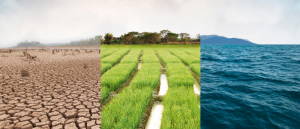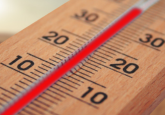Got wellies? Sea levels rise as a result of accelerated Greenland ice sheet melting

Refer a colleague
When was the last time you jumped in a puddle? Satellite data-informed research suggests that global warming caused ice melt in the Greenland ice sheet to intensify and accelerate over the past 40 years, increasing the threat of rising sea levels and global flood risks.
Global sea levels have already risen an estimated 10.8 ± 0.9 mm since 1992 as a result of the Greenland ice sheet discharge. In the first study of its kind, led by Slater at the University of Leeds (UK), satellite data has been used to detect this discharge and directly measure Greenland’s runoff variability.
This new data contributes yet another confirmation of the threat posed by climate change. The vast ice sheets and glaciers in Greenland contain a significant amount of water, but this is increasingly under pressure from rising temperature and extreme weather events. Greenland has averaged a runoff of 357 billion tons per year in the last decade, rising to 527 billion tons in 2012 – over double the 247 billion tons that occurred in 2017 – owing to an expanse of unusually warm air that sat over the ice sheet.
 Can we feasibly curb climate change?
Can we feasibly curb climate change?
Researchers from the University of Oxford have developed a model to assess the suitability of nature-based solutions for climate change, concentrating on how much carbon can be removed from the atmosphere.
Over the course of the previous decade (2011-2020), the ablation zone thinned by an average of 1.4 ± 0.4 m each summer, with winter thickening averaging just 0.9 ± 0.4 m. The average estimated runoff was 357 ± 58 gigatons per year, totaling 3.5 trillion tons over those 10 years. To put that into perspective, it’s enough to drown the entirety of the UK under 15 meters, or the whole of New York city under 4500 meters, of water. So about those puddles…
During that period, one-third of the total Greenland ice sheet meltwater was produced in the summers of 2012 and 2019 alone, highlighting the increasing variability of melting between two summers. Heatwaves are now a significant contributing factor to Greenland’s ice loss, and data suggests that heatwave frequency has increased, with the knock-on effect of creating unprecedented levels of ice melt.
“Model estimates suggest that the Greenland ice sheet will contribute between about 3 and 23 cm to global sea level rise by 2100,” said co-author Amber Leeson (Lancaster University, UK).
The findings show that satellite data enables instant estimates of summer ice melting. Because ice melt variability is not measured in global climate simulations, the new satellite runoff record could contribute to efforts to refine the simulations, increasing confidence in their projections.
Ice melt increases the flood risk of coastal populations across the world. Alterations in oceanic patterns and atmospheric circulation caused by ice melt can also have implications for weather conditions across the planet.
But Slater offers a reminder that there are still reasons to be optimistic: “We know that setting and meeting meaningful targets to cut emissions could reduce ice losses from Greenland by a factor of three, and there is still time to achieve this.”
Please enter your username and password below, if you are not yet a member of BioTechniques remember you can register for free.





